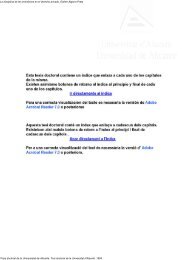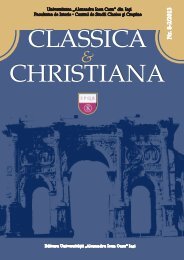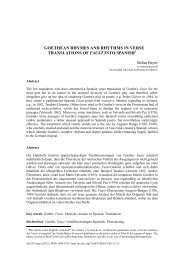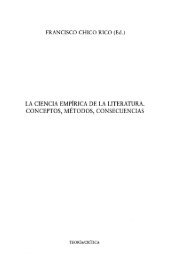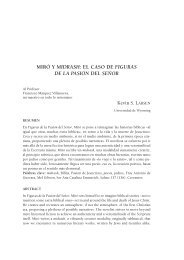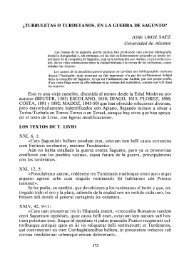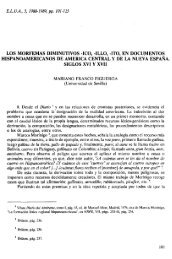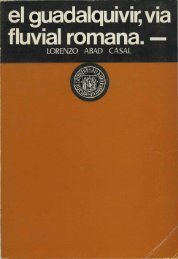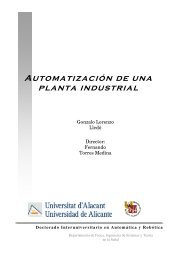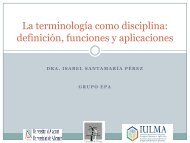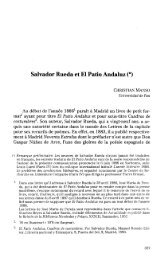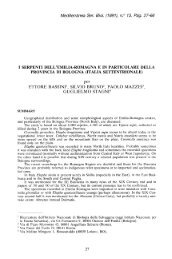ecological effects of marine protected areas empafish project ...
ecological effects of marine protected areas empafish project ...
ecological effects of marine protected areas empafish project ...
You also want an ePaper? Increase the reach of your titles
YUMPU automatically turns print PDFs into web optimized ePapers that Google loves.
EMPAFISH Booklet no. 1 Ecological <strong>effects</strong> <strong>of</strong> Atlanto-Mediterranean MPAs in the EU<br />
Contacts<br />
Emilio Mª Dolores<br />
Servicio de Pesca y<br />
Acuicultura<br />
C/ Campos s/n<br />
Edificio FORO, 2 planta<br />
30201 Cartagena (MURCIA)<br />
Tel. +34 968 326635<br />
Fax: +34 968 326644<br />
Email:<br />
serviciopesca@carm.es<br />
Silvia Revenga<br />
Secretaría General de Pesca<br />
Marítima. Dirección Genereal de<br />
Recursos Pesqueros.<br />
C / José Ortega y Gasset, 57<br />
28006 MADRID<br />
Tel. +34 91 3476000<br />
Fax: +34 91 3476073 / 74 / 75 /<br />
76<br />
Email:<br />
reservasmarinas@mapya.es<br />
Cabo de Palos – Islas Hormigas: <strong>ecological</strong> studies<br />
� General<br />
o Fish assemblage<br />
Fish assemblages have been extensively studied in the area since 1990, using<br />
underwater visual census (UVC) as main sampling technique. The principal<br />
objective has been to study the fish-habitat structure relationships at several<br />
spatial scales, from 10s to 1000s metres (García Charton & Pérez Ruzafa<br />
1998, 2001). Special mention has to be done to the regular coming up <strong>of</strong><br />
“thermophilic” warm-Atlantic species (e.g. Serranus atricauda, Pseudocaranx<br />
dentex, Parapristipoma octolineatum, Sparisoma cretense, Scorpaena<br />
maderensis) within the Cabo de Palos – Islas Hormigas Marine Reserve<br />
(hereafter CPIHMR) and neighbouring <strong>areas</strong>, probably due to the gradual<br />
warming <strong>of</strong> seawater in south-western Mediterranean. Genetic studies have<br />
been undertaken in the area, taking the species Diplodus sargus as model<br />
(González Wangüemert et al. 2002, 2004).<br />
o Benthic communities<br />
First works, prior to the start <strong>of</strong> protection measures, were devoted to study<br />
the biology, ecology and distribution <strong>of</strong> some benthic taxa, such as molluscs<br />
(Templado 1961, 1962; Templado 1980, 1982a, 1982b, 1982c; Templado &<br />
Llansó 1981; Templado et al. 1983), and echinoderms (López Ibor & Galán<br />
1982; López Ibor et al. 1982; Pina & Pérez Ruzafa 1984; Pérez Ruzafa &<br />
López Ibor 1987). Later, authors undertook the mapping and semiquantitative<br />
characterization <strong>of</strong> benthic biocœnoses in the area (Ros et al.<br />
1984, 1986; Pérez Ruzafa et al. 1991; Calvín et al. 1999), which is presently<br />
being updated by the Regional Government.<br />
� Reserve effect<br />
o Fish assemblage<br />
UVC monitoring program show how CPIHMR harbours a very rich and diverse<br />
fish assemblage as compared to un<strong>protected</strong> <strong>areas</strong>, showing evidence that<br />
13



